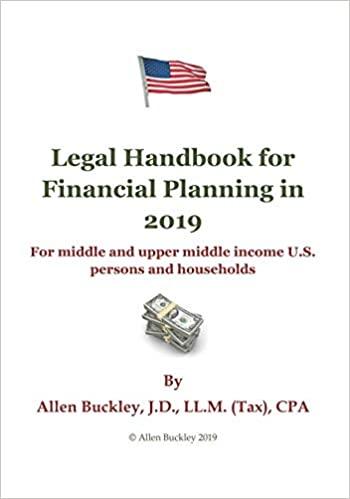Question
TOPIC 2 (60 credits) You are the presenter of a seminar and you have to answer the following questions. I need the answers to the
TOPIC 2 (60 credits)
You are the presenter of a seminar and you have to answer the following questions.
I need the answers to the following subquestions
1. How is the value of a bond determined? What will be the value of a ten-year bond with a nominal value of 1,000 with a 10% issue rate, with an annual required yield is 10%? (5 points)
2. What will be the value of the above bond if immediately after its issuance the expected inflation increases by 3%, forcing investors to seek a return of 13%? In this case we will have a bond under the premium (discount bond) or premium bond (5 points)?
3. What will happen to the value of the bond if inflation falls and the rd (rd=the yield on a debt securities) falls to 7%? Will we now have a bond that is discounted or premium? (5 points)
4. What will happen over time to the value of a ten-year bond if the required yield remains at 13% and / or 7%? (5 points)
5. What will be the yield (to maturity?) at the end of a ten-year bond with an annual interest rate of 9%, and a nominal value of 1,000, which is sold for 887.00? If it is for sale 1,134.20? What does the fact that the bond is sold at or above par value mean for the relationship between rd and issue rate? (5 points)
6. What is the total return, current return and return on equity for the bond sold under par? (assume that the bond is held to maturity and the company does not default on the bond). (5 points)
7. How does the valuation equation of a bond change if the coupon payments are made every six months? Find the value of a ten-year bond with a issue rate of 10% and semi-annual coupon payments if the nominal interest rd is 13%. (5 points)
8. Suppose that a ten-year bond with a nominal value of 1,000 with a issuance rate of 10% and semi-annual coupon payments is sold today instead of 1,135.90, resulting in the formation of the nominal yield at maturity at 8%. The bond as can be withdrawn after five years at the price of 1,050.
(a) What is the nominal bond yield on revocation (YTC)? (2.5 points)
(b) If this bond is purchased, what is the investor most likely to earn. The yield to maturity YTM, or YTC (yield on revocation) and why? (2.5 points)
9. What is the spread of a bond and how is it related to the default insurance premium (DRP)? How do bond ratings relate to default risk? What factors are associated with the rating of a corporate bond? (5 points)
10. What is interest rate risk or price risk? Which bonds carry the highest interest rate risk, annual or ten-year, and why? (5 points)
11. What is the risk of reinvestment? Which bonds carry the highest reinvestment risk, annual or ten-year? (5 points)
12. How is interest rate risk and reinvestment risk related to maturity risk? (5 points)
Step by Step Solution
There are 3 Steps involved in it
Step: 1

Get Instant Access to Expert-Tailored Solutions
See step-by-step solutions with expert insights and AI powered tools for academic success
Step: 2

Step: 3

Ace Your Homework with AI
Get the answers you need in no time with our AI-driven, step-by-step assistance
Get Started


